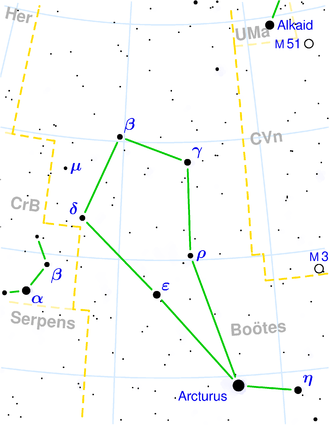NGC 5600
| Galaxy NGC 5600 |
|
|---|---|

|
|
| SDSS recording | |
| AladinLite | |
| Constellation | Bear keeper |
|
Position equinox : J2000.0 , epoch : J2000.0 |
|
| Right ascension | 14 h 23 m 49.5 s |
| declination | + 14 ° 38 ′ 20 ″ |
| Appearance | |
| Morphological type | Sc / pec / HII |
| Brightness (visual) | 12.1 mag |
| Brightness (B-band) | 12.7 mag |
| Angular expansion | 1.4 ′ × 1.4 ′ |
| Surface brightness | 12.7 mag / arcmin² |
| Physical data | |
| Redshift | 0.007735 ± 0.000021 |
| Radial velocity | 2319 ± 6 km / s |
|
Stroke distance v rad / H 0 |
(105 ± 7) x 10 6 ly (32.1 ± 2.2) Mpc |
| history | |
| discovery | Wilhelm Herschel |
| Discovery date | April 17, 1784 |
| Catalog names | |
| NGC 5600 • UGC 9220 • PGC 51422 • CGCG 104-015 • MCG + 03-37-013 • IRAS 14214 + 1451 • KUG 1421 + 148 • 2MASX J14234954 + 1438194 • GC 3869 • H II 177 • h 1797 • HIPASS J1423 + 14th | |
NGC 5600 is a 12.0 likes bright spiral galaxy with extensive star formation from Hubble type Sc in the constellation Bootes the northern sky . It is estimated to be 105 million light years from the Milky Way and about 45,000 light years across .
The galaxies NGC 5587 and NGC 5591 are located in the same area of the sky .
The object was discovered on April 17, 1784 by Wilhelm Herschel with an 18.7-inch reflector telescope, who described it as "pF, not S, lbM, r".
